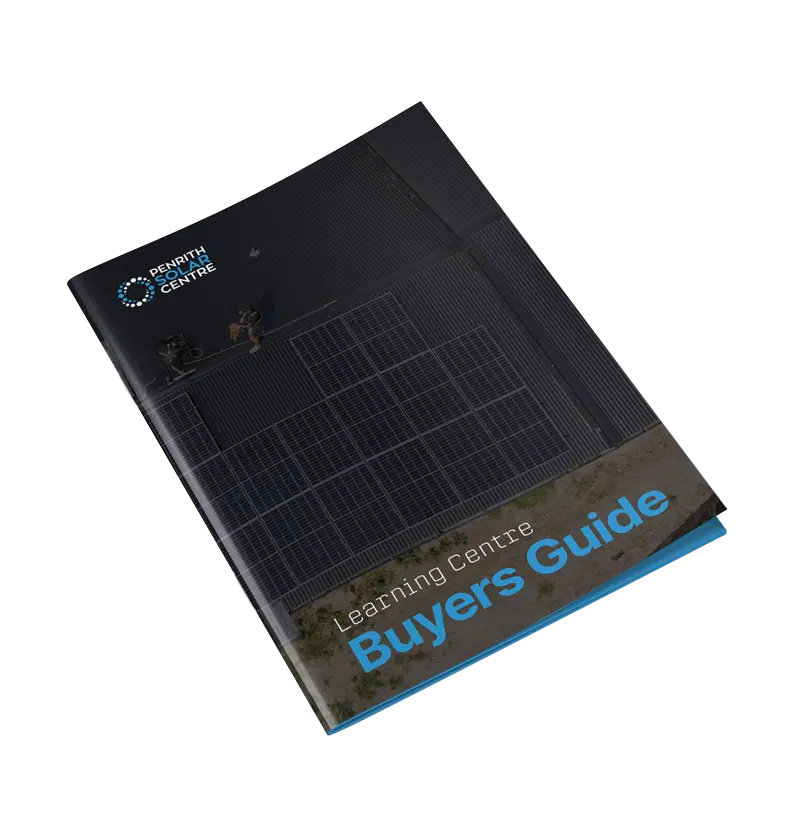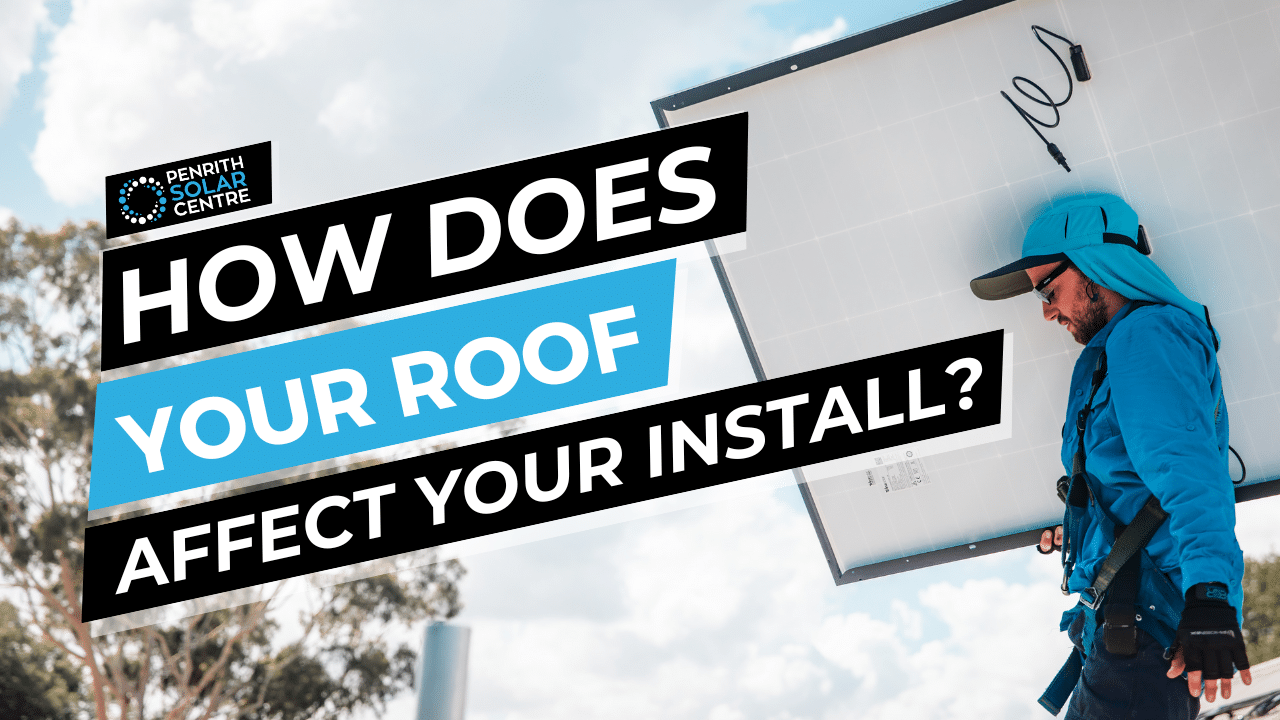
You’ve decided to purchase a solar system. Because you’re smarter than the average bear, you’ve done a lot of research to make sure you invest wisely. But there are still so many questions about the next steps after you make your purchase. After all, expert installers are about to descend upon your home with complex electrical technology.
How’s it going to work? Will someone teach you how to use the monitoring app? What will the installation be like? Asking questions is important to understand what you’re getting into. Answers to those questions will confirm you made the right choice and feel confident in your purchase.
At Penrith Solar Centre, we understand the connection between your roof and your solar installation. Your roof is the unsung hero of everything we do. Without it, who knows where you’d end up placing your solar panels? We’re here to address the questions and concerns you may have about this vital aspect of your solar journey: the installation. The type of roofing materials on your house plays a pivotal role in determining the ease of your solar system installation.
In this article, you’ll learn the following:
- What Type of Roof Do I Have?
- Can You Install Solar on a Metal Roof?
- How Does a Tile Roof Affect My Installation?
This article is about helping you make informed decisions and ensuring that your solar system installation is smooth. After reading, you will have a better understanding of how the construction of your roof will affect the installation of your solar system.
What Type of Roof Do You Have?
The type of roofing material you have on your home can impact various aspects of your solar system installation; from the ease of the installation to the long-term performance of your solar system.
Roofing materials share a symbiotic relationship with your solar system. The system performs because of the foundation the roof offers when the panels are securely installed. Every installation is unique because every home is unique.
Before we dive into how your roof affects installation day, you need to understand the differences between the types of roofing materials commonly used in Australia.
Tile Roofs
Tile roofs are a popular choice for many homes, known for their durability and aesthetic appeal. There’s debate as to where Terracotta roof tiles originated; some trace it back to Neolithic China, and some to the Middle East around the same era.
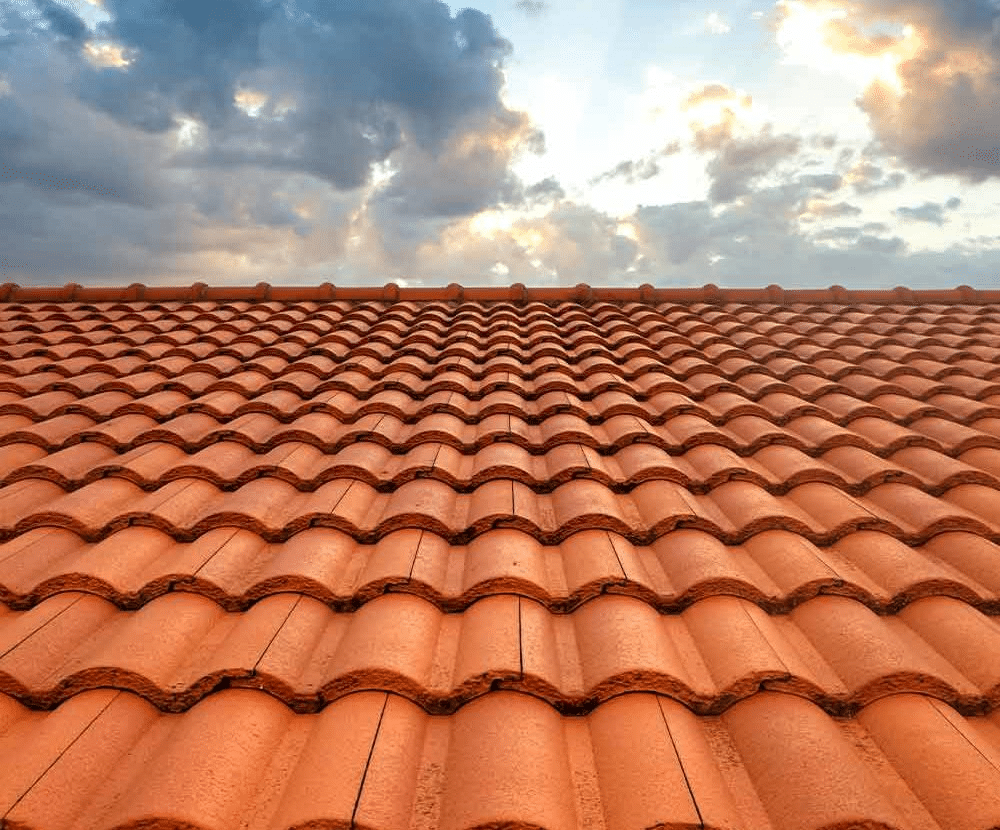
Terracotta is known for its long-lasting durability and resistance to the effects of weathering. They’re great in both hot and cold conditions and provide thermal insulation that can help reduce energy needs for heating and cooling the home.
Terracotta tile roofs can be further categorised into several subtypes, each with its unique characteristics:
Swiss Terracotta: Characterised by a rounded and smooth surface, Swiss Terracotta tiles are suitable for solar panel installation due to their ease of attachment and durability, making them ideal for areas with challenging weather conditions.
Spanish Terracotta: With flat or slightly curved tiles and a matte finish, Spanish Terracotta provides stability for solar panels and complements regions with warm climates, regulating indoor temperatures efficiently.
Traditional Terracotta: Offering versatility with various shapes and styles, traditional terracotta tiles can accommodate solar panels with the right mounting systems, allowing homeowners to choose a style that complements their solar panel aesthetics.
Shingle Terracotta: A relatively new tile type found in modern homes built in 2020 and onwards, shingle terracotta can be challenging to work with, making professional installation crucial.
Concrete Tile Roofs
Concrete tile roofs are very similar to terracotta roofs, but the shingles are made out of concrete. They are much more durable than terracotta. The installation does differ slightly, and we’ll get to that shortly.
Metal Roofs
Metal roofs, often synonymous with the brand Colorbond because they’ve been the leading manufacturer of metal roofs in Australia since 1843, offer a different set of advantages and considerations. Within the world of metal roofs, you’ll find various options:
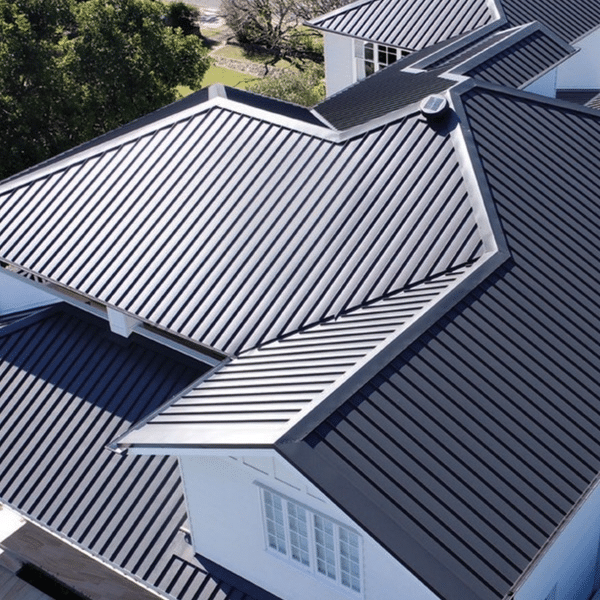
Colorbond: Steel roof. Known for its leak-proof and structural qualities, available in beautiful colours, and with a 36-year guarantee (though if they’re cared for, they can last up to 70 years or longer). Colorbond is a popular choice for homeowners.
Trimdek: A type of Colorbond that provides strength and durability. It has a more modern, ribbed profile.
Klip-lok: A non-penetrating roof system that avoids screwing into the roof, making it unique and leak-resistant. It features a strong rib rising as fluting, offering long straight lines.
Decramastic
Tin Tiles: It’s a tin tile (mostly used in New Zealand) is known for its fragility. Decramastic roofs are made of interlocking tin tiles that are easily damaged by simply walking incorrectly on them. At Penrith Solar Centre, we don’t install on decramastic due to its tendency to crease easily.
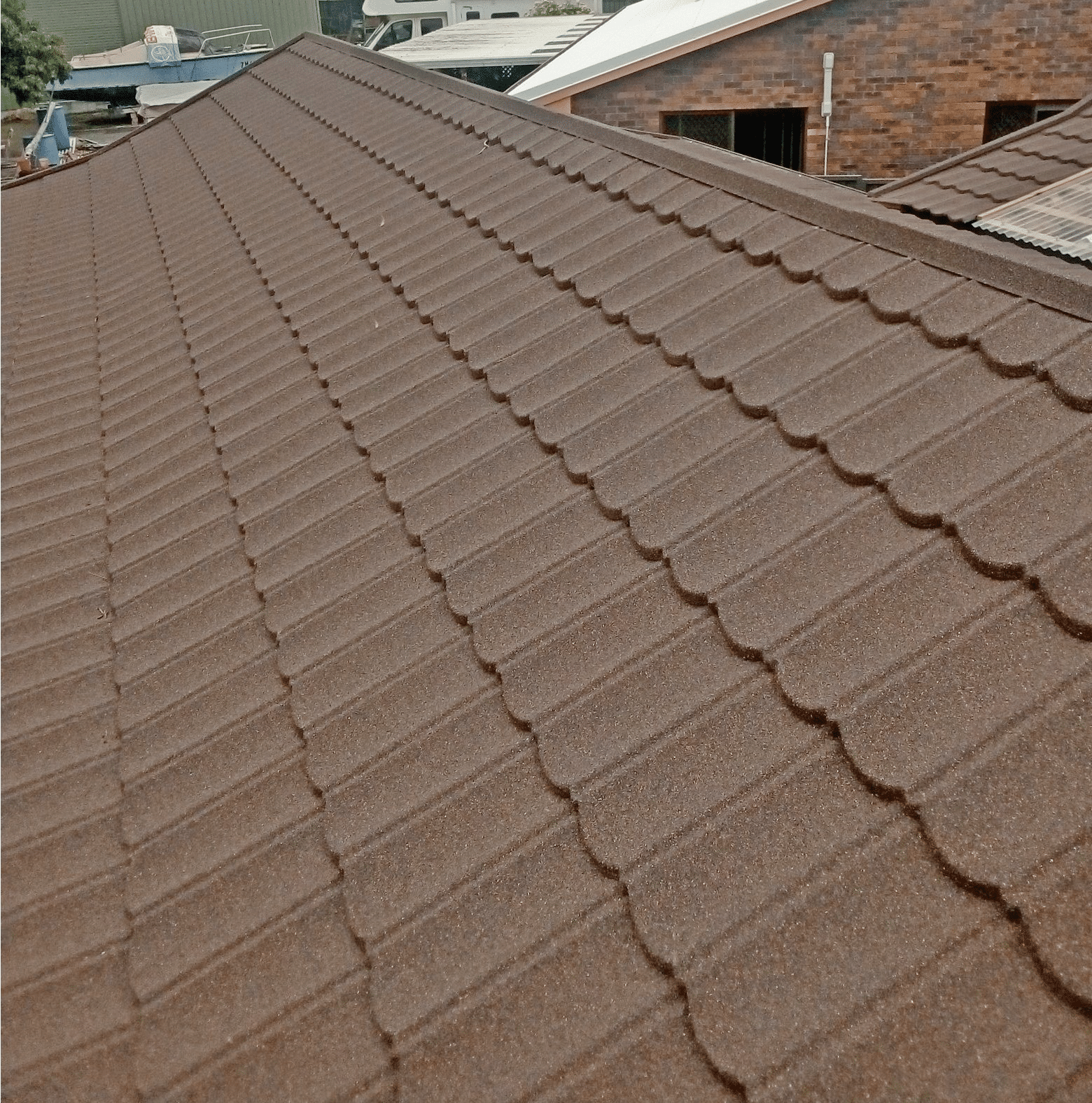
Can You Install Solar on a Metal Roof?
When it comes to choosing a roofing material, the metal roofs mentioned above stand out as favourites for many homeowners. They come in beautiful colours, but the real advantage of metal roofing is the technical and structural qualities it has for your home.
It’s also one of Jake Warner’s (the founder of Penrith Solar Centre) favourite types of roofs to install solar panels on (and he’s installed thousands of systems on multiple roof types).
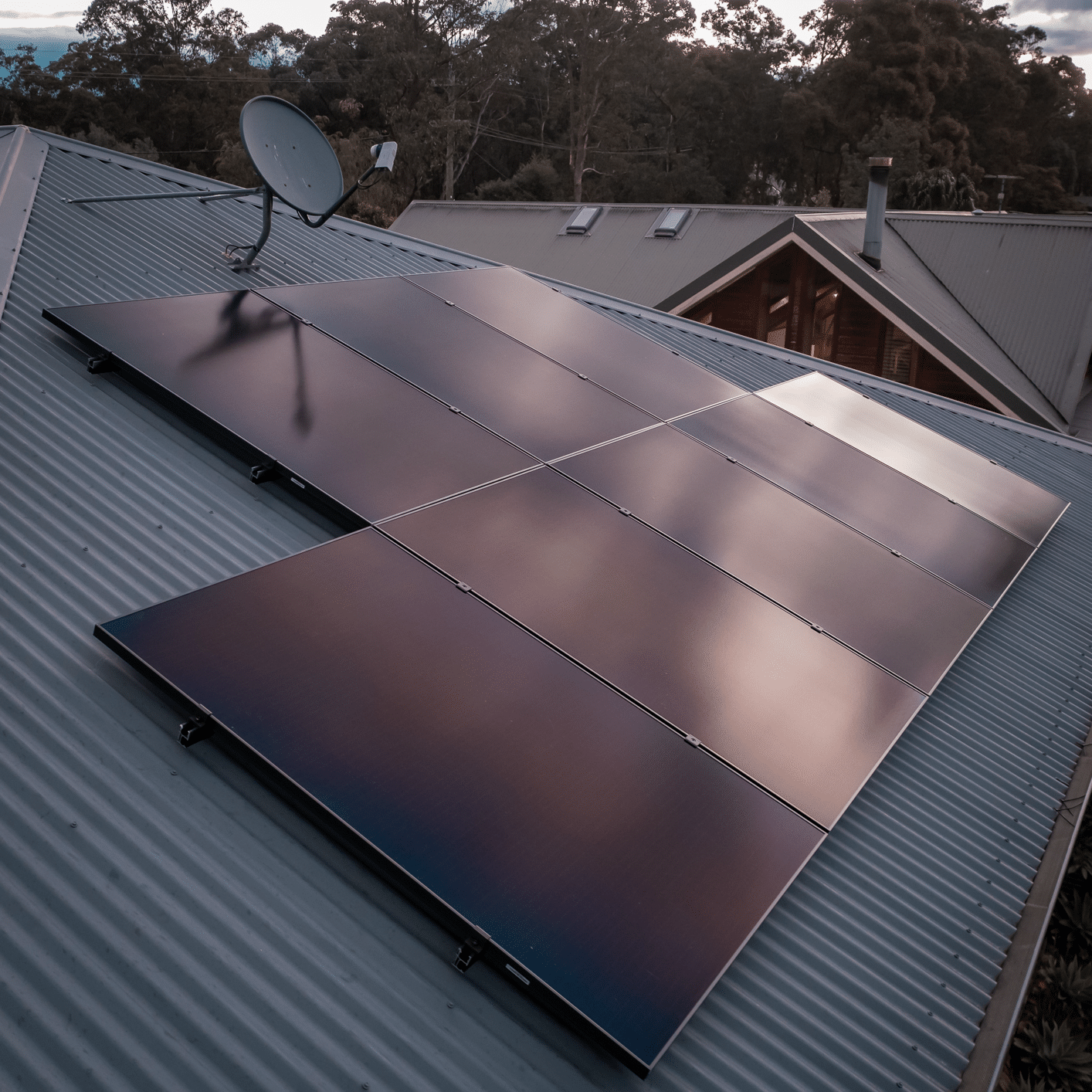
Here’s why:
Structural Strength: Metal roofs act as a natural brace for your home, providing additional support to the frame and securing the entire structure. Once a solar system is installed on a roof that’s secure, it adds to the stability and durability of the system. If the roof doesn’t wiggle, the solar system won’t wiggle.
Weight: Metal roofs are lighter than tile roofs, which means they distribute weight more evenly and reduce the strain on your home’s frame. Which is handy if you’re installing expensive technology on top of it.
Leak-Proof: Metal roofs, when installed correctly, are practically leak-proof. This ensures long-term protection for your home. When you add a carefully and correctly installed solar system to that, it’s rare that the installer will need to come back to repair a roof leak.
We only attach the L-foot mounts on the ridges of a metal roof. You never mount anything in the valley. That’s where the water runs when it drains to the gutter. Never put a hole in the valley of a metal roof.
When we install solar on a metal roof, we take out an existing roof screw from its hole on and replace it with a thicker gauge roof screw when we install our Schletter L-foot, which has a water sealant on the bottom of it.
The only disadvantage of this process is when an existing roof screw was not properly screwed in. Sometimes our installers find they have been screwed in at an angle. When they encounter this situation, they simply find another screw to remove/replace nearby. The screw that was improperly screwed in is then sealed by our team with Sikaflex to prevent a leak. Our team is thorough.
Our Install Process: We place the mounting feet on the roof, and for each section of the roof, there’s a single point of penetration.
Picture this: we create a 28-millimetre hole and thread a 25-millimetre conduit through it. We seal it up using high-quality Sikaflex sealant. Then, we top it off with a flashing (which is a metal “sleeve” of sorts that you fix to the edge of a metal roof called a dektite). It’s secured by screws, and we only screw it into the ridge, not the valley.
We use Sikaflex throughout this process to ensure a tight seal every time. Now, the amazing part is that this roof penetration is built to last for at least 25 years. The secret to its durability? It’s tucked under the solar panels, so it’s not exposed to direct sunlight every day. Even if the Sikaflex were to fail, you can still confidently bet that it won’t leak because it’s positioned on the ridge of the roof. That’s a crucial detail.
If you’re interested in learning a bit more about what our team does, you might want to check out the following article titled, What to Expect on the Day of Your Solar Installation.
Ready to go solar? click here.
How Does a Tile Roof Affect My Installation?
While metal roofs offer a lot of advantages, tile roofs make up a substantial portion of our installations. Working with tile roofs requires a high level of attention to detail. Here’s why:
Grinding Tiles: Each tile that supports a roof bracket must be carefully ground to ensure a proper fit and prevent future cracking. We use a large Milwaukee battery-powered grinder with a 7-inch disc. It goes underneath the top tile and the installer grinds back the tile, so it allows the tile to sit back, flushed, so it won’t stick up. While it only sticks up about 10 to 15 millimetres on the bracket, in 5 to 10 years or so it will eventually crack and create a leak. This meticulous process ensures that tiles remain flush, preventing any unevenness that could lead to cracking over time.
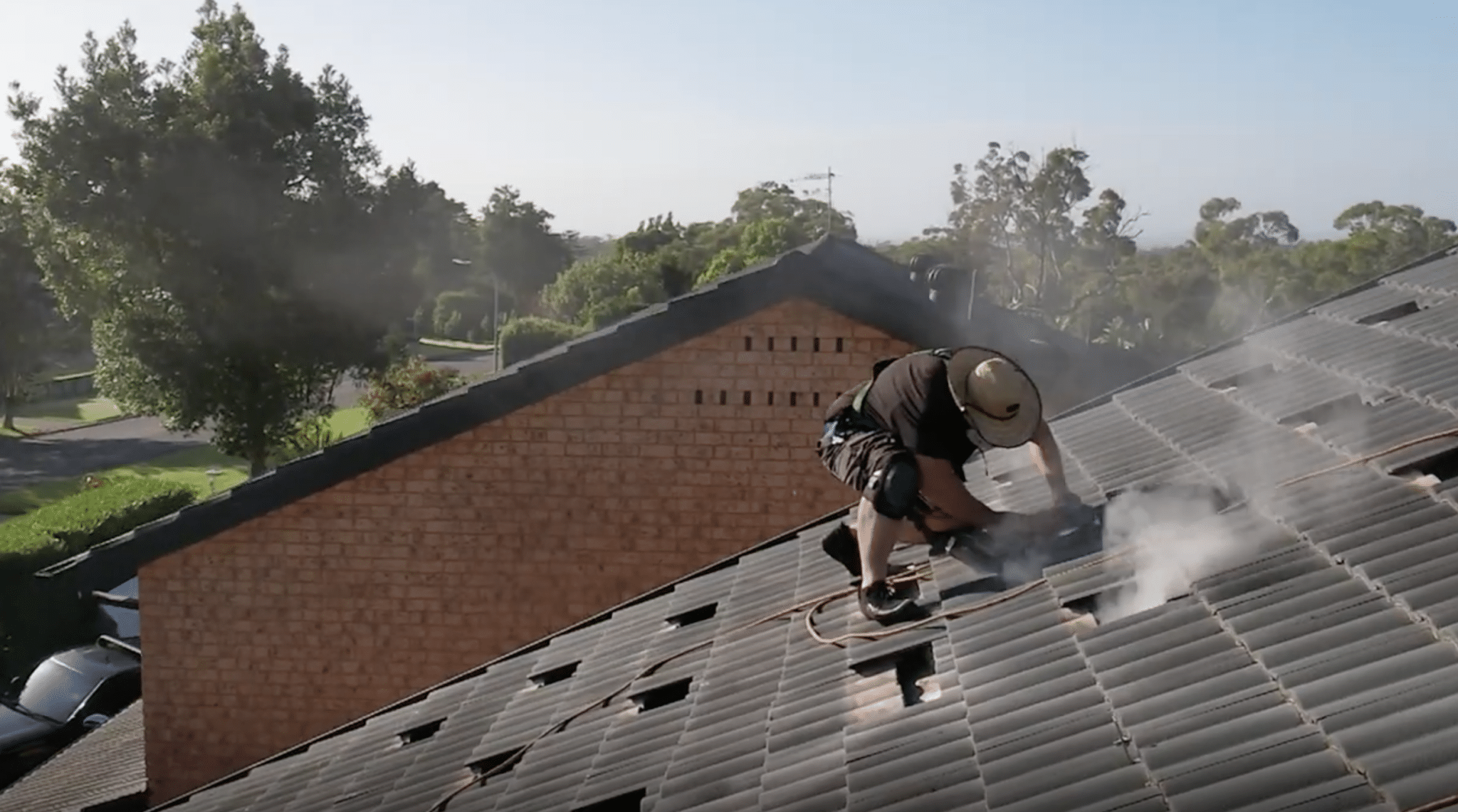
- Replacement Tiles: It’s essential to have replacement tiles on-site. It’s recommended that there be at least 20 available when your installer shows up. You don’t want to risk a roof leak that will probably happen without some spares on hand to replace any cracked or damaged tiles can be replaced promptly, maintaining the structural integrity of the roof.
- Roof Penetration: A key aspect of tile roof solar installation is roof penetration. This process involves creating holes in the roof for conduit, cables, and mounts while ensuring the roof remains watertight. When installing on a tile roof, roof penetrations must be sealed properly to prevent leaks. Using proper flashing and sealing materials is crucial to protect the roof and maintain its integrity. Installing the flashing on a tile roof is similar to installing it on a metal roof, here’s how:
- A 28mm hole is made through the tile using a masonry hole saw.
- A 25mm corrugated conduit is brought through the hole.
- Genuine Sikaflex is used to seal the hole, providing a strong and watertight seal.
- Flashings, such as metal roof-type flashing, are installed to protect against water infiltration. It’s different because it has a rubber boot on the inside and a lead flashing on the outside. The lead flashing is tucked under the tile so water runs off and over the flushing and spreads out across all the tiles it overlaps. We let it run down to the next tile, so water should not actually go anywhere near the penetration. These lead flashings will stand the test of time. It’s important to ask your installer about what type of flashing they are using on your tile roof. A proper tile flashing costs around $50, but a cheap flashing costs about $6. Some installers are saving $44 per roof penetration just by using the wrong flashing. With just a few questions, you can save yourself a leaky roof.
A concrete tile roof will go through a similar installation process to a terracotta tile roof installation. Where a terracotta tile is lifted to make room for the racking foot, a concrete tile is simply slid upwards to make room for the foot attachment. The underside of the concrete tile is ground down, so it rests on the foot of the racking in a similar manner to the terracotta tile. A concrete tile roof installation will typically require fewer additional tiles because they are far more durable than terracotta tiles. Our service team recommends at least 15 spare concrete tiles.
If you’re interested in hearing what our customers are saying about our installers, you might want to check out the following article titled, “I’ve never had a more positive experience with tradespeople.” – How Tabitha Saved with Penrith Solar Centre.
Roofing and Solar: A Perfect Pair
It really is crucial to discuss the specifics of your unique roof type with your installer and ask the right questions to avoid things like leaks (or a tile slipping off the roof, hitting you on the head, giving you amnesia, and you wandering around the shopping mall in search of the ultimate frozen yogurt only to get back to your beautiful home to suddenly be suspicious that someone broke in and tried on all your socks while you were gone).
A final consideration when it comes to installing solar on different types of roofs: we’ve encountered some customers who are eager to install solar immediately after they replace their roof. This is a great approach and very forward thinking. A good installer will work with a good roofer for the best finish. It’s a good idea to get your roofer and solar installer collaborating with each other before either begins their work.
At Penrith Solar Centre, we understand how important your roof is. It shelters your home and your family from the elements and plays a pivotal role in the success of your solar panel installation.
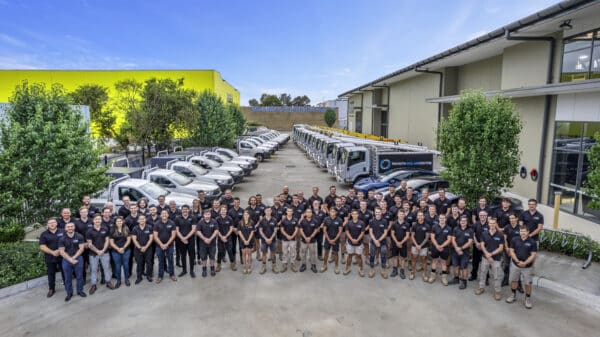
With the right information, you can confidently move forward on your path to clean, renewable energy. If you’re interested in learning a bit more about how your solar installation will interact with your roof, you might want to check out this article titled Which Way Should Solar Panels Face in Australia?
